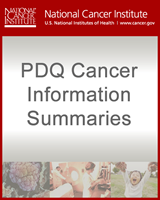From: Breast Cancer Treatment (PDQ®)

NCBI Bookshelf. A service of the National Library of Medicine, National Institutes of Health.
| Stage | TNM |
|---|---|
| 0 | Tis, N0, M0 |
| IA | T1, N0, M0 |
| IB | T0, N1mi, M0 |
| T1, N1mi, M0 | |
| IIA | T0, N1, M0 |
| T1, N1, M0 | |
| T2, N0, M0 | |
| IIB | T2, N1, M0 |
| T3, N0, M0 | |
| IIIA | T0, N2, M0 |
| T1, N2, M0 | |
| T2, N2, M0 | |
| T3, N1, M0 | |
| T3, N2, M0 | |
| IIIB | T4, N0, M0 |
| T4, N1, M0 | |
| T4, N2, M0 | |
| IIIC | Any T (Tis, T1, T0, T2, T3, T4), N3, M0 |
| IV | Any T (Tis, T1, T0, T2, T3, T4), Any N (N0, N1mi, N1, N2, N3), M1 |
T = primary tumor; N = regional lymph node; M = distant metastasis.
aAdapted with permission from AJCC: Breast, revised version. In: Amin MB, Edge SB, Greene FL, et al., eds.: AJCC Cancer Staging Manual. 8th ed. New York, NY: Springer, 2017, pp. 4–96.
Notes:
1. T1 includes T1mi.
2. T0 and T1 tumors with nodal micrometastases (N1mi) are staged as Stage IB.
3. T2, T3, and T4 tumors with nodal micrometastases (N1mi) are staged using the N1 category.
4. M0 includes M0(I+).
5. The designation pM0 is not valid; any M0 is clinical.
6. If a patient presents with M1 disease before receiving neoadjuvant systemic therapy, the stage is Stage IV and remains Stage IV regardless of response to neoadjuvant therapy.
7. Stage designation may be changed if postsurgical imaging studies reveal the presence of distant metastases, provided the studies are performed within 4 months of diagnosis in the absence of disease progression, and provided the patient has not received neoadjuvant therapy.
8. Staging following neoadjuvant therapy is denoted with a yc or ypn prefix to the T and N classification. There is no anatomical stage group assigned if there is a complete pathological response (pCR) to neoadjuvant therapy, for example, ypT0, ypN0, cM0.
From: Breast Cancer Treatment (PDQ®)

NCBI Bookshelf. A service of the National Library of Medicine, National Institutes of Health.